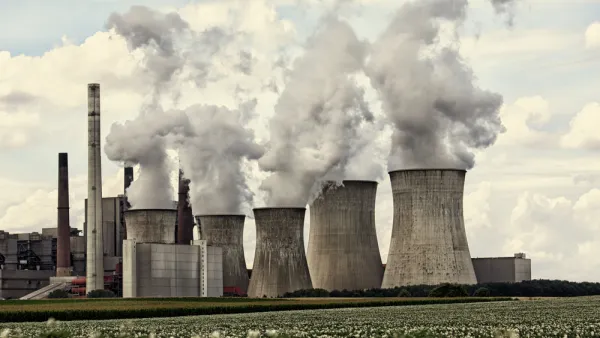The Environmental Protection Agency proposed a critical change in the cost-benefit analysis used in the mercury rule that applies to coal-fired power plants. By eliminating the principle of co-benefits, public health impacts would be severe.

"The Environmental Protection Agency on Friday proposed a major change in the way the federal government calculates the costs and benefits of dangerous air pollutants, arguing that authorities should exclude some of the public health benefits stemming from new rules," report Brady Dennis Juliet Eilperin for The Washington Post on Dec. 28.
The proposal, which revisits a 2011 rule limiting mercury emissions from coal plants, argues EPA lacked justification to curb the neurotoxin in the first place because many benefits stemmed from the overall drop in air pollution that would occur once power companies adopted new technologies.
Rather than rolling back the Mercury and Air Toxics Standards (MATS) rule, the EPA proposes to revise the calculation used to determine the health benefits of the rule, specifically attacking the use of co-benefits which result when other pollutants, such as particulate pollution and nitrogen oxide, are also reduced by the new equipment used to reduce mercury emissions.
The MATS rule applies only to coal-fired power plants, the nation’s single biggest emitter of mercury, and oil-powered plants, which "produced less than 1% of total electricity generation during 2016," according to the Energy Information Administration. Mercury is essentially not emitted by natural gas-fired power plants.
By not allowing co-benefits, the cost-benefit analysis works against installing the new equipment, as most of the health benefits are gained by reducing other pollutants, and the costs of adding the pollution-control equipment are exponentially greater than the health benefits gained by mercury reduction alone.
“I just think it’s a little fuzzy math when you say, ‘Reduce mercury and we have all these other benefits over here,’ as the shiny object,” EPA acting administrator Andrew Wheeler saidin an interview with The Washington Post this fall.
But the environmental and public health community view the dismantling of the rulemaking calculation far differently.
“There is no legitimate justification for this action,” Harold P. Wimmer, chief executive of the American Lung Association, said in a statement, adding that the regulation had been effective not just in limiting mercury, but also emissions of carcinogens such as arsenic, chromium and nickel, as well as toxic acid gases that form particle pollution, which causes asthma attacks, heart attacks and premature death.
“EPA’s proposal to undermine the Mercury and Air Toxics Standards is one of its most dangerous efforts yet.”
The new rule stems from a Supreme Court case in 2015 where the Obama MATS rule was invalidated and remanded to the the DC Circuit Court of Appeals while Obama's EPA reworked the cost-benefit analysis. Eilperin and Dennis explain the subsequent events that led to Friday's proposal.
Related:
-
A bombshell series of stories details the environmental and health costs of many fo the Trump administration's industry friendly regulatory decisions.
-
The Far-Reaching Consequences of Remaking the Mercury Emissions Rule, September 9, 2018
-
Supreme Court Overturns EPA's Mercury Rules, June 29, 2015
-
Supreme Court to Review EPA's Mercury Standard, November 27, 2014
FULL STORY: EPA to make it harder to tighten mercury rules in the future

Analysis: Cybertruck Fatality Rate Far Exceeds That of Ford Pinto
The Tesla Cybertruck was recalled seven times last year.

National Parks Layoffs Will Cause Communities to Lose Billions
Thousands of essential park workers were laid off this week, just before the busy spring break season.

Retro-silient?: America’s First “Eco-burb,” The Woodlands Turns 50
A master-planned community north of Houston offers lessons on green infrastructure and resilient design, but falls short of its founder’s lofty affordability and walkability goals.

Test News Post 1
This is a summary

Analysis: Cybertruck Fatality Rate Far Exceeds That of Ford Pinto
The Tesla Cybertruck was recalled seven times last year.

Test News Headline 46
Test for the image on the front page.
Urban Design for Planners 1: Software Tools
This six-course series explores essential urban design concepts using open source software and equips planners with the tools they need to participate fully in the urban design process.
Planning for Universal Design
Learn the tools for implementing Universal Design in planning regulations.
EMC Planning Group, Inc.
Planetizen
Planetizen
Mpact (formerly Rail~Volution)
Great Falls Development Authority, Inc.
HUDs Office of Policy Development and Research
NYU Wagner Graduate School of Public Service



























